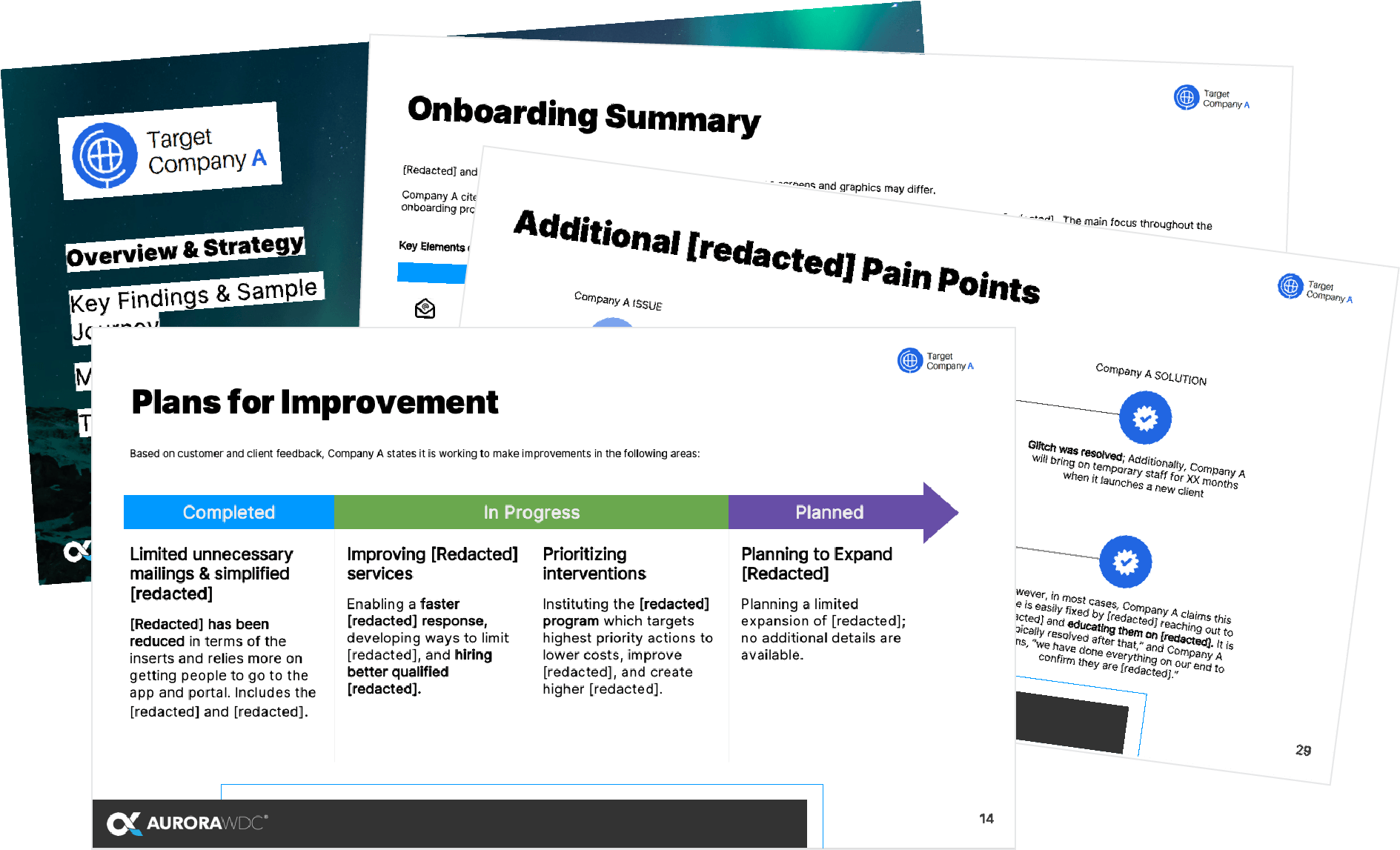Cooking the black swan.
How Do You Use Wargaming and Scenario Planning Exercises to Identify, Assess and Mitigate Enterprise Risks?
Aurora WDC is a full-service strategic, market, and competitive intelligence consultancy that helps risk professionals identify, quantify, and mitigate threats to their organizations. We do that through professional services, software, and training.

Competitive Simulations are used anywhere and by anyone where lives or a lot of money is at stake.
What is a “Competitive Simulation?”
(aka War Game, Business Simulation, Strategy Workshop, etc.)
| Consideration | Description |
| Focus Area | Does the simulation focus on the entire company, an industry, one product line, etc? |
| Teams | In addition to the “home” team and the “market” team, which other competitors and stakeholders require representation? |
| Rounds of Play | How many opportunities will teams have to interact and adjust based on others’ actions? |
| Time Period | What is the timeframe of the simulation – days, weeks, months, or years? |
| Purpose / Driving Question |
|
Tangible Benefits:
- Explore and discover the impacts of multiple possible futures
- Pressure test the market response to your strategic plans and assumptions
- Identify Key Intelligence Questions (KIQs) and Key Intelligence Topics (KITs) for future monitoring and study
- Reduce forecasting and planning uncertainty
Intangible Benefits:
- Align varying stakeholders in your organization with a shared vision for the future
- Understand the future as it relates to your organization specifically, not just “the market”
- Enjoy the energy and interaction of a live simulation, building team cohesion and culture
- Be confident in your organization’s chances to succeed no matter what happens tomorrow
- Deeper understanding of skill sets
Starting Point
Define Intelligence Goals & Objectives
- To create a simulation of future competitive behavior
- To anticipate the probabilities and impacts to your business of certain scenarios coming true
- To exercise greater control over ongoing competitive storyboarding
Inputs
- Sponsor Commitment
- 20-40 key stakeholders
- Decide on 1-2 day format
- 4-6 week prep calendar
Process
Planning
- Pre-Briefing Book
- Market, Competitor Profiles
- Team Assignments
- Logistics Considerations
Execution
- 2 Rounds of Play (generally)
- Probability-Impact Grid
- Planning Round
- Lessons Learned, Intel Gaps
After-Action
- Competitive Storyboard
- Immediate Action Items
- Strategic Alterations
- What’s Next?
End Result
Benefits & Outcomes:
- Plan profiles that enable the Sponsors to “sell” the more significant strategic
- Understand how competitors and other market players will react
- Is used to provide that critical link between strategy and tactics.
- Explore and test future competitive strategies to discover weaknesses in the plan and identify possible consequences of adoption
- Probability-Impact Grid (PIG) that allows ongoing risk and opportunity assessment
What if I can’t get 20 people in a room for 1-2 days?
Some Ideas…
- There are options! Mini-wargames can be designed for sessions totaling 3-4 hours and can be run with as few as 6-10 people.
- As you can imagine, the skill sets of your participants will impact how effective these shorter sessions will be. If anything, they can be more intense than a bigger exercise.
- If you can’t get six people together (live or virtually), there are still ways to take advantage of the methodology! Some of the tools used in simulations can be extracted for other strategic planning workshops, or even as stand-alone exercises.
- Don’t forget that developing the competitor and market profiles to prepare your participants can also facilitate learnings. As the very least, these documents help us validate what we know about competitors, market trends, and evolving customer needs and wants. Giving your team in the field an opportunity to weight in on what they experience interacting with customers not only keeps our framing current, it creates buy-in from internal stakeholders who touch the customer on a daily basis.
People and expertise
John Westberg
Read Bio
I manage research projects from beginning to end: designing feasible scopes, ensuring timely execution and delivering actionable intelligence. My clients cross almost all verticals, but I have special expertise in retail, CPG and life sciences. I have extensive experience in reputation intelligence, which is using traditional intelligence best practices and tools to assess and mitigate reputation risk. I am an expert at identifying and monitoring early warning indicators for intelligence programs, and applying risk management principles to prepare, prevent and respond to critical issues. In my free time, I enjoy spending time outdoors hiking, kayaking, fishing, meditating, and camping. I am based in Minneapolis, but can often be found wandering around outside in Northern Minnesota.
Tim Smith
Read Bio
Tim Smith specializes in designing business competitive simulations (war games) for a broad range of client companies around the globe. Tim’s experience began in the U.S. Army Intelligence community, where he designed, developed and implemented numerous joint-service military training exercises. Then he spent 17 years working in the business sector where he has conducted over 200 war games for Fortune 500 companies. Tim has also trained facilitators from the following companies to run their own simulations: 3M, Amgen, Dow Corning, HP, Kimberly-Clark, and Medtronic.
Aurora WDC offers a full suite of services, software, and training serving risk professionals, including:
- Human Intelligence (HUMINT) Collection
- Competitive Landscape Analysis
- Competitor, Executive, and Risk Profiling
- Regulatory and Legislative Risk Assessments
- Open-Source Intelligence (OSINT) Collection Software
- War Game and Scenario Planning Facilitator Training Counterintelligence Training




